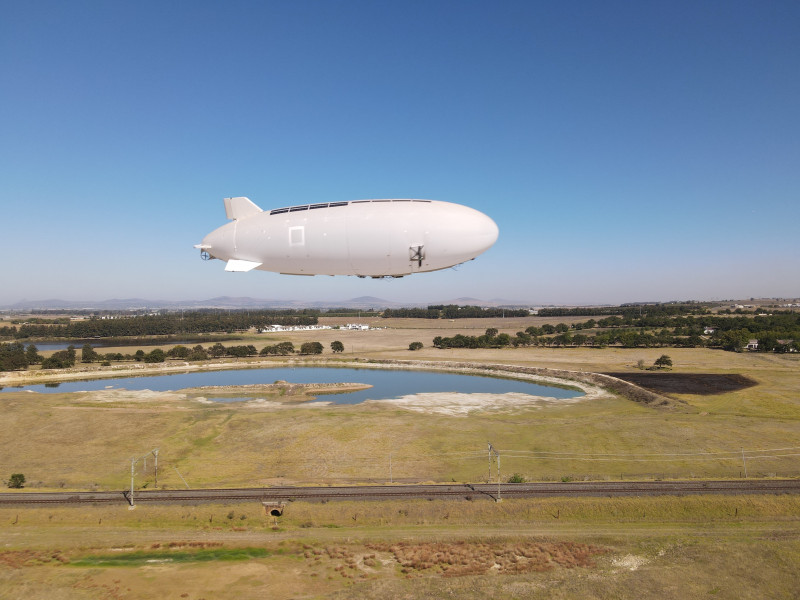Stellenbosch-based startup Cloudline is developing and operating solar-powered autonomous airships that are optimised for long-duration and long-distance missions, completely rewriting the rules of aerial operations in terms of cost and reach.
Founded by Spencer Horne in 2018, Cloudline combines the lifting power of helium gas with advanced flight control and powertrain technologies to allow its airships to offer order-of-magnitude cost advantages over multi-rotor and fixed-wing unmanned platforms.
Compared with unmanned aerial vehicles currently available, airships are significantly safer, and therefore preferred by regulators and manned pilots, as well as less expensive to operate, all with greater range and carrying capacity for a given vehicle weight and capital cost.
“In addition to providing an emissions-free platform, solar power supercharges the aircraft to cover distances up to 400 kilometres in favourable conditions and increases our payload capacity by substituting some of our batteries,” Horne said.
After many years of development, Cloudline recently took the wraps off its product at the Paris Air Show. The autonomous unmanned airship has been type-approved by the Civil Aviation Authority in South Africa and Namibia, and will soon be approved in Kenya too.
“After returning to South Africa from university in the USA, I found myself doing consulting work in East Africa, traveling off the beaten path on market visits. I was astonished not just at the infrastructural deficit, but struck by the fact that people had very high barriers to trading with the global economy. I wondered why delivery drones, which had bridged the infrastructural gap, were not moving beyond single-dose medical interventions and providing a higher payload and longer distance service to these remote communities. Down the line, I would find the answer to be that the complexity of the tech doesn’t scale linearly with size,” Horne told Disrupt Africa.
“I realised that shrinking down airships to their “drone size” would confer several advantages and potentially hit the sweet spot in terms of capability and cost to unlock these markets. As we’ve built, we have also found resonance with customers who haven’t had their aerial monitoring needs fulfilled.”
There is resonance with investors, too. So far, Cloudline has raised US$4.1M in pre-seed funding from the Raba Partnership, 4Di Capital, Enza Capital, Timon Capital, and Schmidt Futures – a philanthropic initiative founded by Eric and Wendy Schmidt. This cash has been utilised to launch its first three deployments and win regulatory approval in South Africa, yet Horne has global plans.
“We are overwhelmed with interest from various sectors and as a company, we are taking this year to explore the best-fit customers for our early deployments. Our current anchor customers are international multi-laterals and research investors who are piloting our technology for possible use in government services and the private sector,” he said.
Cloudline has deployments and pending deployments in areas, and regions, as diverse as medical supply delivery in rural Kenya, reverse logistics of diagnostics in rural Namibia, and emergency connectivity to remote populations in South Africa and Mozambique for the World Food Programme (WFP). But how will it monetise?
“Our customers buy the end-service from us, not the airships. We partner with locally-based operating companies that already have drone licenses and can navigate local operating environments,” said Horne.
“We’re only just starting our commercial path this year with the first three deployments, so the focus is foremost on serving our pipeline of opportunities and revenue growth.”
There have, clearly, been a myriad of challenges in getting Cloudline off the ground (pun alert!), but Horne says the biggest one was the “timing complexity” of all the facets of the business, some of which are not fully in its control, such as regulatory timelines and external supply chain shocks.
“As the CEO, I have to balance making sure that all of these facets converge just right in just the right way. One never gets it perfectly right and shifts in the market have added another layer to navigate. On the upside, this challenge is most pronounced in the earliest phase and now that we are commencing our commercial work, we can really demonstrate the value of what we do for our customers,” he said.


